
Base price: $22.
3 – 6 players.
Play time: ~20 minutes.
BGG Link
Buy on Amazon (via What’s Eric Playing?)
Logged plays: 6
Editor’s Note: Since this review was published, a revised version of In a Grove has been released. For a review of the updated edition, see here.
Uh, so I bought like 10 Oink Games, so that’s going to be happening almost as much as Dominion happened for a while. I don’t even know where this is in the progression since I kind of also wrote all of these at the same time.
Anyways, in In A Grove, four people were in a grove (surprisingly), but now one of them is dead (which is an actual surprise). You play investigators hot on the scene, trying to figure out who could have committed an Actual Terrible Murder. Will you be able to sleuth out the suspect? Or will you make enough mistakes that you get sent to Cop Jail, the Prison for Cops That Aren’t Good at Solving Murders?
Contents
Setup
So, the setup is super easy for this, like all Oink Games. Give every player five Investigation tokens in their preferred color:
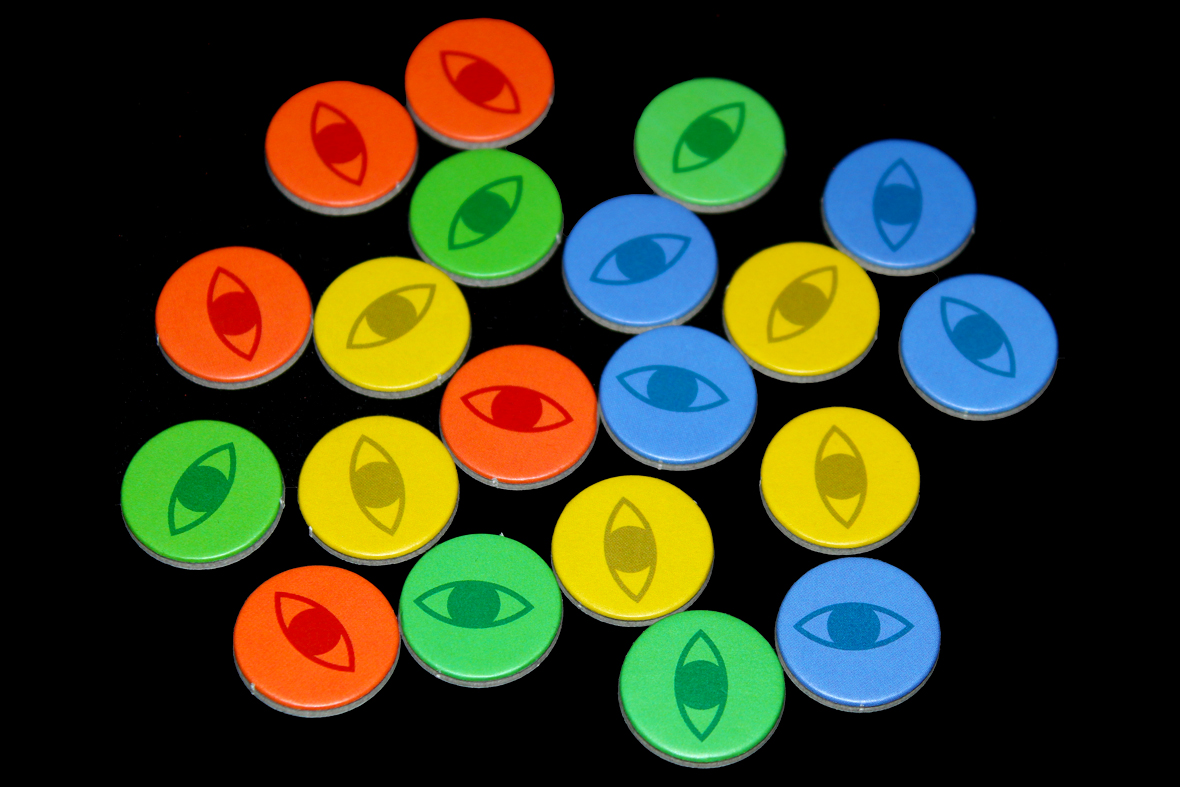
You’re gonna get out the Suspect tiles:
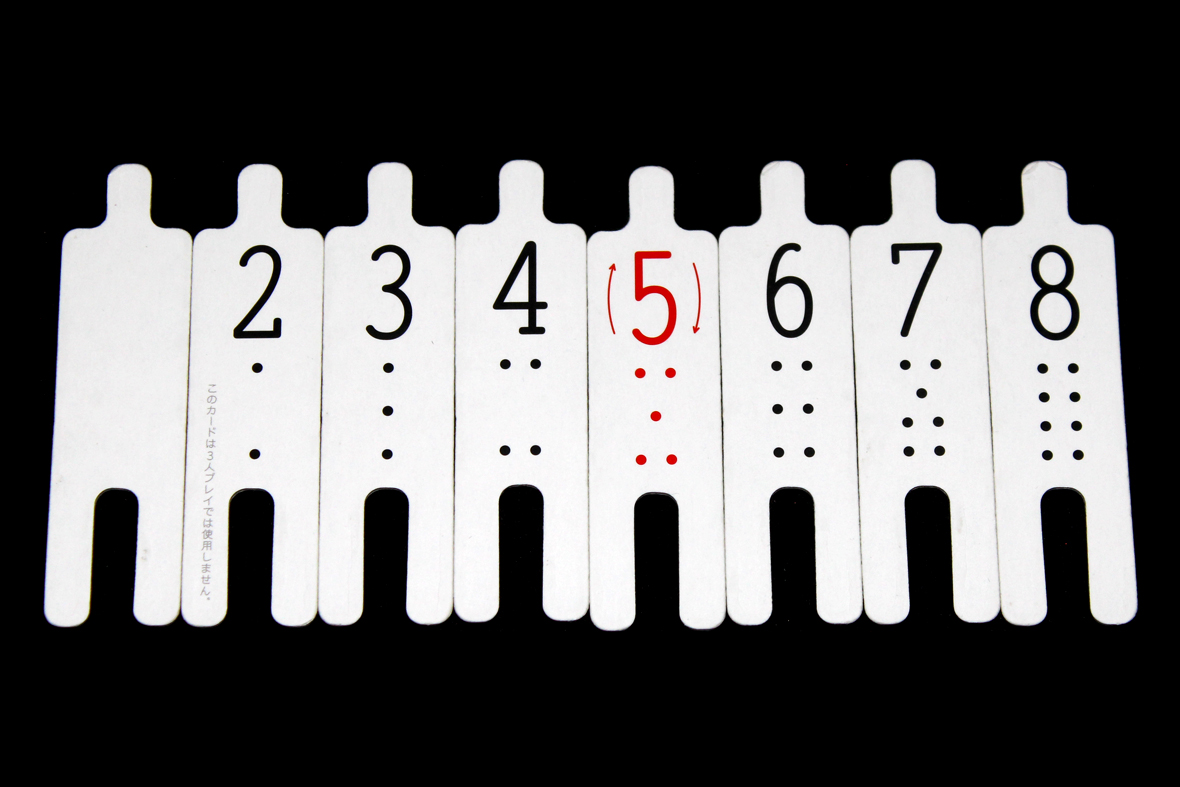
Remove the “2” if you’re only playing with 3 players. Flip them face-down, give every player one, and place four in the center. Three should be upright, one should be … dead.
Set the Tamper and Unseen tokens aside, for now:

Once you’ve done that, choose a player to start and give them the Discoverer token:
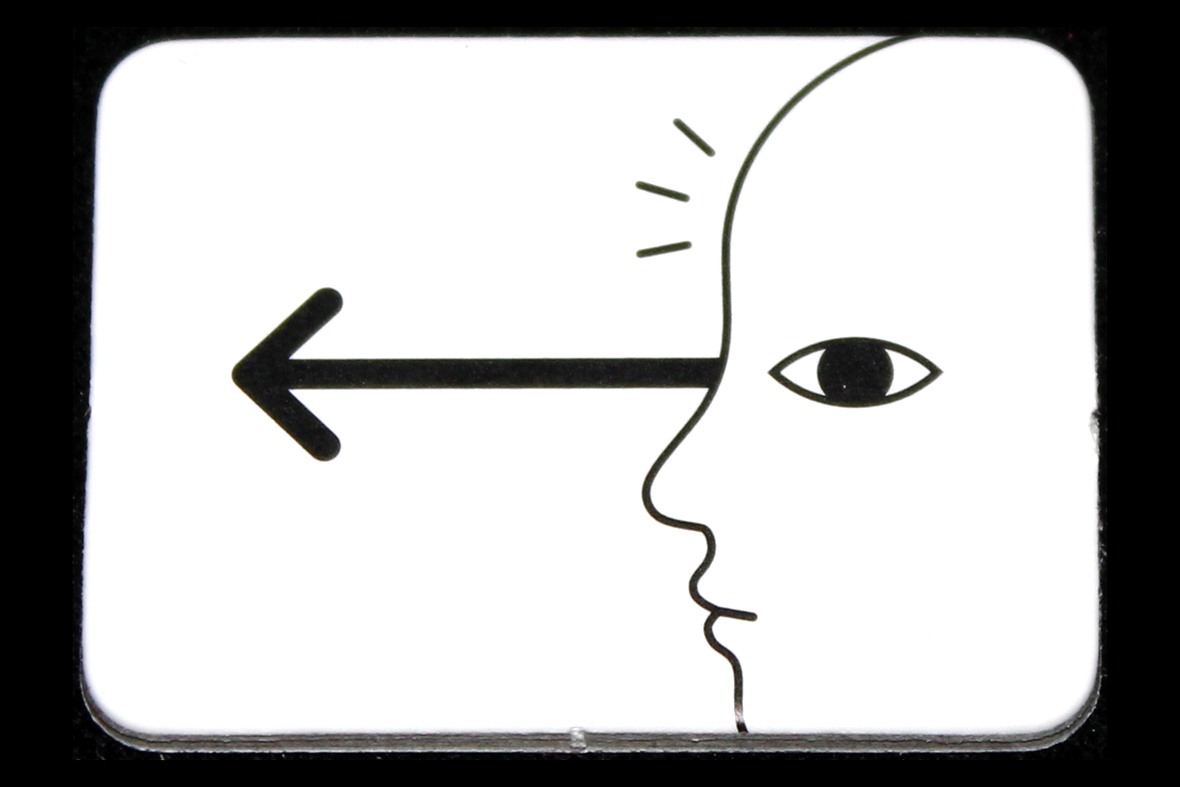
You’re ready to begin!
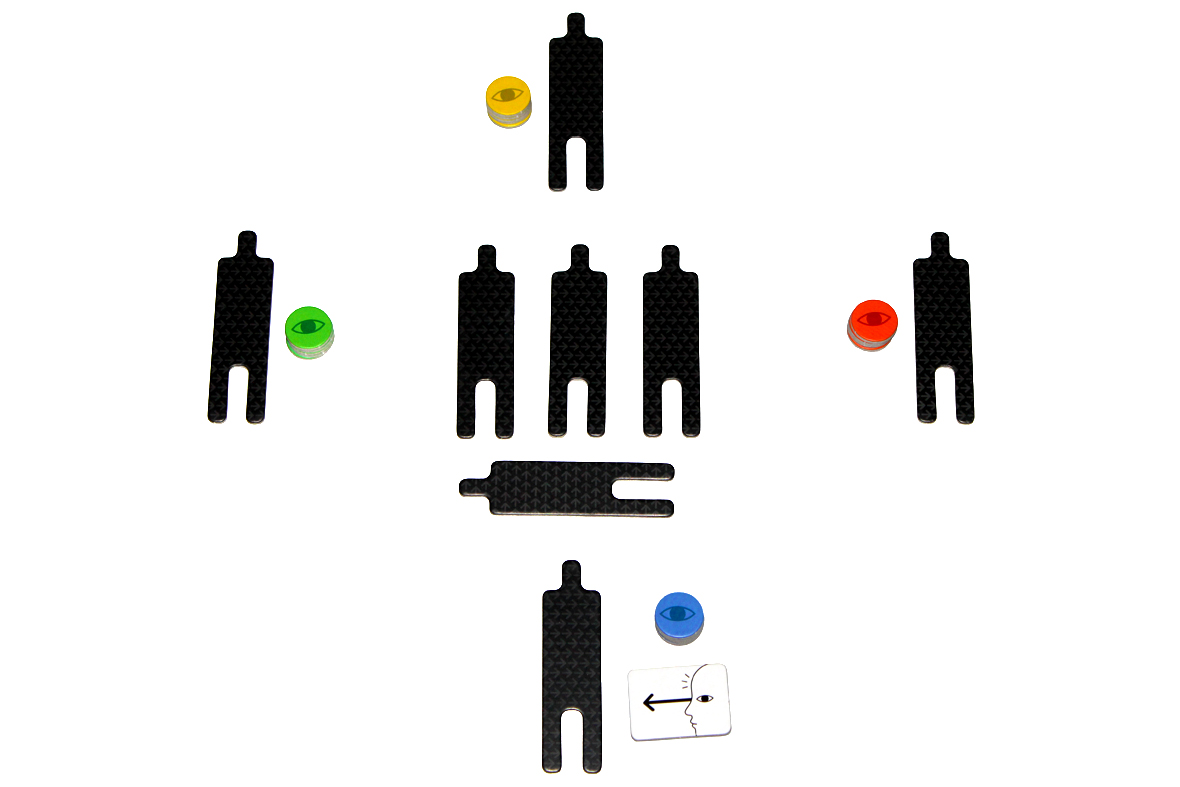
Gameplay
Alright, so a murder’s happened. First, investigate the alibis — take the Suspect tile in front of you, look at it, and pass it to the right. Look at the one you were just passed. You now know two tiles’ worth of information. Now, the Discoverer (the first player) makes the first move. They take two Suspect tiles, look at both, and put them back.
Now, they mark the one the Discoverer didn’t look at with the Unseen token.
Here’s the tough part. With only four pieces of information, they need to decide who they think the Murderer is. That should be simple:
- Unless the 5 is one of the Suspects, the Murderer is the highest number.
- If the 5 is one of the Suspects, the Murderer is the lowest number.
- No matter what, the Blank tile (the Innocent) can never be the Murderer.
Once you place your Investigation token, though, that’s it. Then the next player looks at two, but cannot look at the one the previous player accused. They can still accuse that player, but they might want to think twice before doubling down on a previous player’s accusation. If you do end up doubling down on another player’s accusation, place your Investigation token on top of theirs. That’s important. Once everyone has accused, reveal the Suspect tiles.
- If you’re correct: You get your Investigation token back.
- If you’re wrong: Uh oh! You accused the wrong person. The player whose Investigation token is on top of the stack takes all of the Investigation tokens and flips them over to become Liar tokens. Those are bad!
So if you end up being the last person to accuse someone, you take your token plus the token of anyone you ended up agreeing with. Is that bad? Well, depends on how the game ends:
- If any player runs out of Investigation tokens, the game ends.
- If any player starts a round with 8 total Investigation tokens + Liar tokens, the game ends.
When the game ends, if you ended the game, you lose! If you didn’t lose, the winner is the player with the fewest combined Liar tokens + Investigation tokens.
Tampering
If you’d like to play with a small variant, you can add the Tamper token. This allows the Discoverer to, after viewing the two suspects, swap one of them with the victim. I don’t really know how this works from a lore standpoint, but you do not look at the victim that you swap, just the two suspects. Mark the suspect you swapped with the Tamper token, just like you mark the suspect you didn’t see with the Unseen token, like this:
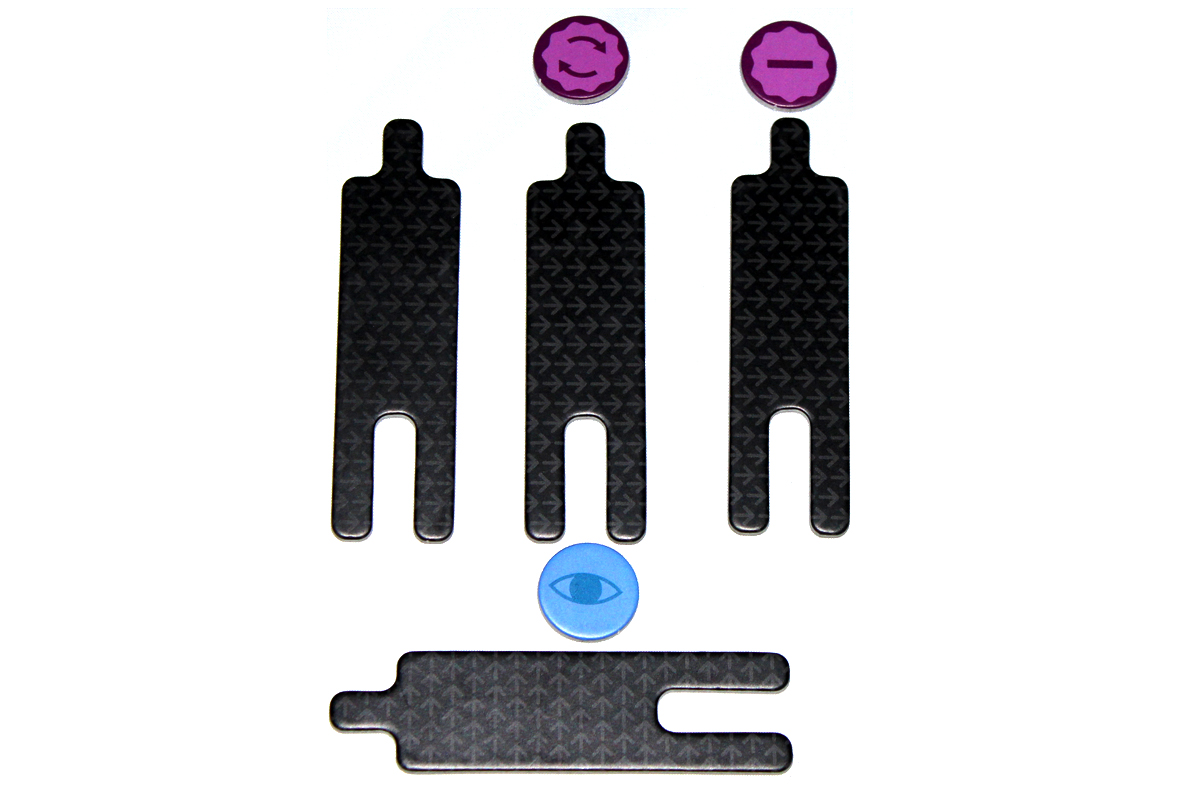
Only the Discoverer can do this.
Anyways, play until someone loses, and find out who wins!
Player Count Differences
Honestly, the game isn’t that much different between three and four players. The only thing that’s missing is the “2” Suspect Tile, which means that your probabilities change slightly since you end up not seeing three tiles, rather than four. It still means that you can get unlucky, like I did, and have a 1/3 chance of guessing correctly (if the middle tile was any of the three numbers I hadn’t seen, then I should pick a different Murderer suspect). I’d happily play this at 3 or 4.
Strategy
- Use your best probability sense. If you’ve seen the 3, the 4, the 5, and the blank, then you just have to hope that one of the tiles you randomly pick is the 8. If you see the 2 and the 5 in the two Suspects you view, well, … it’s 100% the 2.
- Sometimes you want to trick people instead of getting it right. If you see the 5, it might be worth guessing that so a player doesn’t get to see it, thereby making their odds of guessing correctly worse. Even better, they might try to out-think you by guessing yours, meaning that they take the penalty for you both being wrong.
- You want to trick people, but generally trick the same person. If you trick too many different people, you’ll run out of Investigation tokens because they’ll all take yours.
- Be careful when going last. If you’re right, you’re fine, but if you agree with everyone and you’re wrong, you might get overwhelmingly screwed. In a four-player game, you can lose instantly if that happens. It might be better to cut your losses and pick a different Suspect entirely.
- Everyone knows something you don’t know. That’s part of what makes the game interesting. There’s an element of luck to it, sure, but you should try to anticipate other people’s choices and make it as tough for them as possible.
- Some rounds are straightforward. Sometimes you just are 100% guaranteed to get the right answer. Whether you choose to attempt to trick people or not is your business, I suppose.
Pros, Mehs, and Cons
Pros
- Fast. Or, at least, each round is fast.
- Neat concept. The mix of information is neat and it’s a very small-footprint game for games of its type.
- Love the box color. Oink consistently has boxes that really show on shelves, which I appreciate. I love the bright colors and the cover is a vivid reminder of what the game is about. The whole aesthetic is really nice.
- Very simple to teach. Honestly, probably the easiest social deduction game I’ve taught.
- The box is even … more portable? I didn’t realize Oink made half-size games, but, there it is.
Mehs
- Not every round is particularly interesting. Some rounds are just solved. It happens.
- It can be difficult to end the game. If players are lucky and everyone just keeps getting the Murderer correct, then the game can drag out a bit. This is when you have to play a bit riskier and try to bamboozle someone.
Cons
- Pretty restrictive player count. Sure, I guess that two-player games are even more restrictive, but 3 – 4 for a game that’s vaguely social deduction is kind of an interesting limit. Makes it hard to play at certain events.
- Players need to be very careful about handling the Suspect tiles. I’ve played a couple games where players have accidentally swapped their two tiles, which essentially breaks the round. Thankfully, players generally remember, but if that happens with the first or second player rather than the last player, then suddenly every following player’s decision needs to be modified, but it’s too late. It happens.
Overall: 8.25 / 10
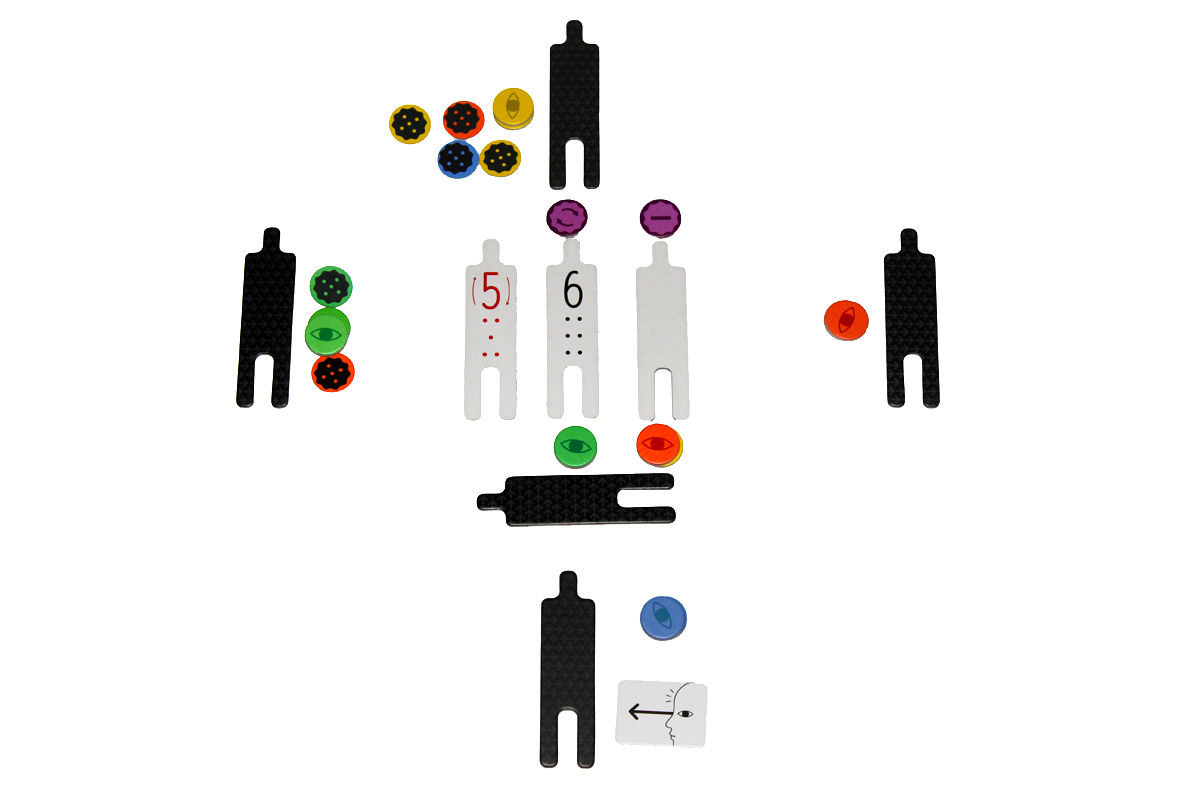
Overall, In a Grove packs a really solid social deduction game into a tiny box. It’s easy to learn, doesn’t have a real language dependence, and a pretty fun concept. Similar to Cake Duel, it’s easy to play completely honestly, but often if you want to win you’ll have to try and bluff another player. The problem is, like Cake Duel, you don’t know everything that they know, and you might just end up bamboozling yourself. I think that style of game appeals to me a bit more, so I’m naturally a big fan of In A Grove. Oink’s got another success, here, and if this kind of game seems up your alley, I’d highly recommend checking it out!